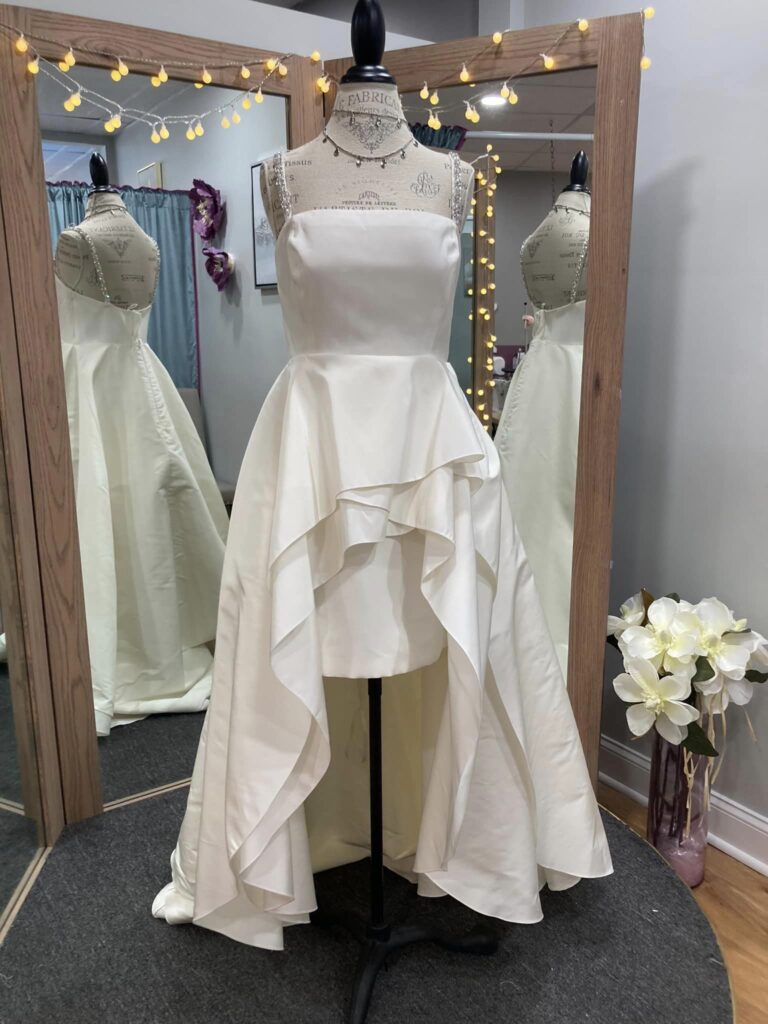Seamless's Guide To Fabrics
You probably already know that the fabric your dress is made from affects the look and feel of the garment, but did you know it plays a big part in the price of your alterations? This guide is here to provide insight into the different fabrics we work with daily and to help you make informed decisions when shopping for gowns.
Stretch Fabrics
These figure-hugging fabrics are the epitome of fashion meets function. Eat, drink, and be merry without your dress digging into you. The main downside is that this fabric will cling to you and your undergarments, even “no-show” panties. So if you are uncomfortable with the shape of your body or your bellybutton showing through your dress you have two options. 1. Choose a heavier less stretchy fabric or 2. Take a deep breath and learn to rock the body you have.
Non-Stretch Fabrics
Non-stretch fabrics provide shape and structure and tend to be less fussy overall. However, make sure your garment is not too tight since there is not any give. These fabrics are better at disguising common areas of insecurity.




Beaded Fabrics
Beaded fabric is a popular choice for adding a little sparkle or visual interest to an otherwise simple dress or as the finishing touch to over-the-top gowns. The beads can be subtle, one or two sewn on top of an applique rose, or front and center, embroidered into extravagant patterns across the whole length of a gown. Despite its beauty beaded fabric can be uncomfortable to wear as well as time-consuming and hazardous to sew. Beaded fabrics can be a beautiful choice for your dress as long as you are aware of the potential issues and increased price of alterations.



Chiffon
This lightweight material is the most popular fabric for bridesmaids’ dresses and it’s no wonder why. Flowy, feminine, and soft to the touch chiffon is a gorgeous and inexpensive fabric. However, it is very wrinkle-prone, meaning you will likely need to touch up the dress with a steamer before you wear it.



Glittery Fabric
Glittery dresses, veils, and accessories have become more popular over the past few years. The bright colors and metallic sheen speak for itself. Glittery fabrics are prone to shedding and can be very itchy.



Horsehair
Horsehair Binding is a woven plastic mesh that is often used in the bottom of dresses and skirts to provide shape and structure.
However, it is often used in gowns that don’t benefit from it and can be expensive to replace. Discuss with your seamstress if it is necessary for the shape of your gown



Lace
This beautiful fabric can be in the form of an appliqué or can be used for the full body. Because of the intricate nature of lace it can be time consuming to alter and may be more expensive.



Rhinestones
Less itchy than glitter, less scratchy sequins, and more secure than beads, rhinestones are a popular addition to gowns for a reason. However, fabric covered in rhinestones is one of the most expensive to have altered. This is because of how time-consuming and dangerous it can be to work on. Rhinestone-covered fabrics can be a beautiful choice for your dress as long as you are aware of the potential issues and increased prices of alterations.



Sequins
For anyone who wants to shimmer and shine like a disco ball. This fabric is very hazardous to sew and will be expensive to alter as a result. It is also prone to catching on other fabrics and can be scratchy against the skin.



Velvet
This buttery fabric is simple warm and luxurious making it popular for weddings held in colder months. It comes in many rich hues and flattering styles.
If you are between sizes when shopping for clothes made of this fabric size up. This is because velvet holds onto marks so if there is any fabric to be let out it will be covered in marks from where it was previously sewn. In the case of velvet clothing that has been hemmed and needs to be let out, our usual strategy of using fabric from the hem to create more room may not work since velvet has a noticeable grain and the direction of the extra fabric is unlikely to match the original.



Satin
This shily fabric is smooth and soft to the touch. It is available both as a stretch and non stretch fabric.



Tulle
This fabric is a lightweight netting that is flowy and ethereal. This fabric is fairly easy to hem since it does not need to be sewn.




